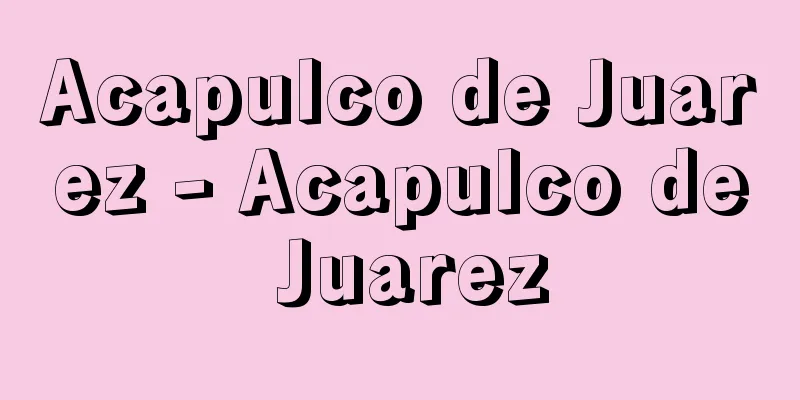God of the Back Door

|
…Typical examples include the Vajrapani in the Hokke-do Hall of Todai-ji Temple, the Kokannon in the Nigatsu-do Hall, and the Madara-shin in the Jōgyō-do Hall. The incantations used to worship the Uto no Kami during Buddhist rituals became performing arts, as the name Uto no Sarugaku indicates, and became the stage for the birth of medieval performing arts. The Okina in Noh is called Uto no Kami (the guardian deity or guardian deity), and appears in the Ennen at Shussō-e ceremonies, but it is also common for demons to appear from Uto at Shussō-e ceremonies since ancient times, and both symbolize the religiosity of Uto. … From [Kyojin]...According to the medieval "Nohdensho, February 1, 1800," it is clearly stated that the Shukugami is Madarajin, the guardian deity of Buddhism worshipped in large temples of the Taimitsu school. This is related to the fact that the "Ushirodo no Kami" in the tale of the origin of Sarugaku, included in Zeami's "Fushikaden," is in fact Madarajin, and that the work of the early Shushi Sarugaku was a "divine admonition" to this deity. The Shukugami belief of Sarugaku people symbolizes the fundamental nature of the performing arts before the Middle Ages, when their magical and religious nature was undifferentiated, and the Shukugami can be said to have been the performing arts deity. ... *Some of the terminology that refers to "Uto no Kami" is listed below. Source | Heibonsha World Encyclopedia 2nd Edition | Information |
|
…例えば東大寺法華堂の執金剛神,二月堂の小観音(こかんのん),常行堂の摩多羅神(まだらしん)などがその典型。法会儀礼のなかで後戸の神をまつる呪法は芸能化し〈後戸の猿楽〉という呼称が示すように中世芸能誕生の舞台となった。能楽の翁を後戸の神(宿神・守宮神)といい修正会(しゆしようえ)などの延年に登場するが,古来,修正会に後戸から鬼が出現するのもまた普遍的であり,ともに後戸の宗教性を象徴している。… 【宿神】より…中世の《享禄三年二月奥書能伝書》によると,宿神は台密系の大寺院に祭祀する仏法守護神たる摩多羅神(まだらじん)であると明記してある。世阿弥の《風姿花伝》に載せる猿楽起源説話にいう〈後戸(うしろど)の神〉が,実態は摩多羅神であり,初期の呪師(しゆし)猿楽のわざはこの神に対する〈神いさめ〉であったことと関係がある。猿楽民の宿神信仰は,呪術宗教性を未分化なものとしていた中世以前の芸能の根源的な性格を象徴するもので,宿神はすなわち芸能神であったといってもよい。… ※「後戸の神」について言及している用語解説の一部を掲載しています。 出典|株式会社平凡社世界大百科事典 第2版について | 情報 |
>>: Back three bunches - Ushirosanbou
Recommend
Saneuji Saionji - Saionji Saneuji
A politician in the mid-Kamakura period. Tokiwai ...
Cairo Conference - Kairokaigi
However, Britain and France, competing for intere...
Sima Xiangru - Shiba Shojo
A Chinese literati from the Western Han Dynasty. ...
Feng Yu-xiang (English name)
[Birth] Guangxu 8(1882).11.6. Anhui Died: Septembe...
Wellek, R.
… Based on this reflection, a fierce anti-French ...
Onijaku - Onijaku
...It is widely distributed throughout Japan, Kor...
chiliasm
…It can also be used to refer to an ideal world, ...
Variable costs
Fixed costs are costs necessary for production tha...
Idioms - Kanyoku
An expression in which two or more words are alwa...
Radioactive prospecting
Also known as radioactive exploration. It is a met...
Syntipas (English spelling)
A collection of medieval Greek entertainment short...
Rikuentai - Rikuentai
At the end of the Edo period, Nakaoka Shintaro or...
Kommunistische Partei Osterreichs
...The position of party leader passed from Scher...
Virtue - Toku
An important concept in Chinese ethical and polit...
Cameron Highlands
A highland resort in the center of the Malaysian p...



![Hangai [Mountains] - Hangai](/upload/images/67cc9434cd33b.webp)


![Sarawak [State] - Sarawak](/upload/images/67cbaff6a6c4e.webp)

![Yamashiro [town] - Yamashiro](/upload/images/67cd0e20cd4d7.webp)
